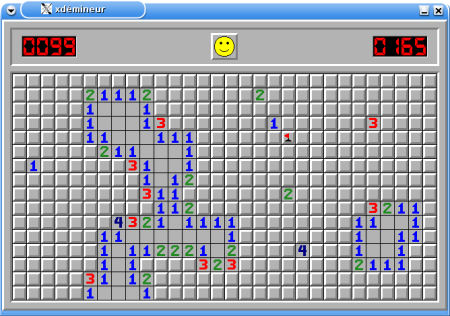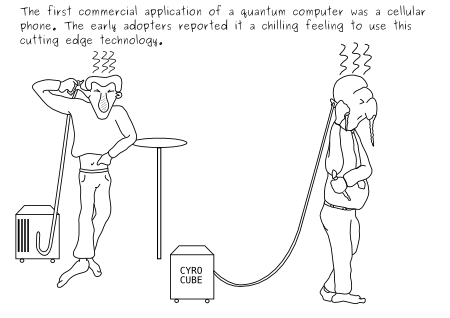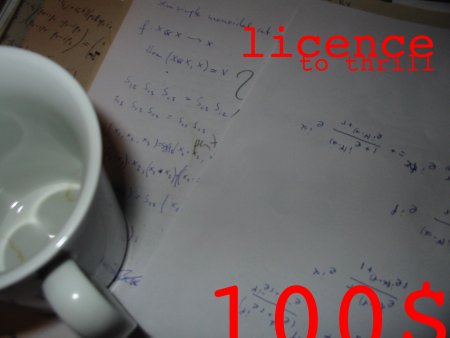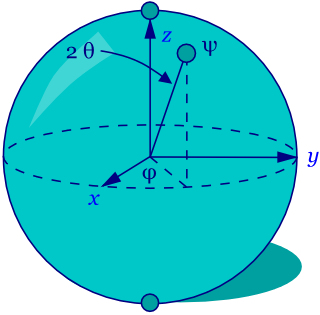mindsweeping minesweeper
Monday, February 19th, 2007
image from wikipedia
This is a followup to the last quantum computer post.
randformblog on math, physics, art, and design |

image from wikipedia
This is a followup to the last quantum computer post.
 …when they finally managed to get the cooling for those quantum computers portable… (image © timh)
…when they finally managed to get the cooling for those quantum computers portable… (image © timh)After all the hype with the iphone (or whatever its name is / was / will be) one has to look for the next gen smartphone hype. A candidate could be a cellular powered by a quantum computer. However if you look for something to adopt in the near future the linux smart phone Neo1973 might be something for you.

Unfortunately I couldnt find the article of a german math professor (in I think it was the DMV Mitteilungen) who was decribing a patent trial in which he was an expert. Although in his view the patent in the trial basically described the Gauss-Newton Algorithm it was still issued.
This is one of the reasons, why software patents are absurd. Most parts of a software are simply speaking pure mathematics. So issuing software patents means more or less to try “to patent mathematics” – i.e. patenting a discipline which had been living for centuries on the free exchange of ideas. No mathematician would claim that the use of a published result would be a “theft of intellectual property”, if he/she is cited correctly. Mathematics is precious but free.
Another reason, why patenting software is absurd is that this actually rather obstructs technological progress – e.g. see the example of the patent discussions about the mpeg standard. Software patents are bad for open source projects and likewise for small to midsize companies, who do not have the money to fight for patent rights. And a lot of sofar issued patents are just ridiculous.
For these or similar reasons the german business community patentfrei.de is now also supported by the Open Source Automation Development Lab (OSADL) and the patentverein in their protest against the European Patent Litigation Agreement (EPLA) which is seen as a problem concerning software patents and which will be under investigation on monday by the EU council for competetiveness. Unfortunately the german minister for justice seems to be in favour for the EPLA.
via heise news

A Blochsphere from Wikipedia. Mathematicians call this often CP^1.
Last Tuesday saw the announcement of D-Wave, which gave a demonstration on their World’s First Commercial Quantum Computer. There will be a second demonstration today at the Telus World of Science in Vancouver, Canada.
The first application of their Orion quantum computing system demo is a pattern matching application applied to searching databases of molecules. The second is a third-party planning/scheduling application for assigning people to seats subject to constraints. However it is designed to solve the two dimensional Ising model in a magnetic field.
->more on the demo announcement website by Geordie Rose the CTO of D-wave.
->some technical papers for interested folks
For the readers convinience Scott Aaronson of Shtetl-Optimized also hands out
“The Orion Quantum Computer Anti-Hype FAQ”.
“In January 2006 the European Commission published the Study on the Economic and Technical Evolution of the Scientific Publication Markets of Europe.
The Study noted that ‘dissemination and access to research results is a pillar in the development of the European Research Area’ and it made a number of balanced and reasonable recommendations to improve the visibility and usefulness of European research outputs.”
Our mission of disseminating knowledge is only half complete if the information is not made widely and readily available to society.
Berlin Declaration, October 2003
(both quotes from the petition website)
Now, a year after publication of the Study a petition had been filed to urge the EC to endorse the recommendations in full. For signing the petition for open access to research results:
examples of open access to science publications:
->Cream of science and DAREnet
->THE archive
-> MIT’s open courseware
At this point one should maybe remind the EU about the benefits of open source software and communities for their research institutions. These open initiatives are supported by individuals who contribute to the community usually in their free time. They do this for various reasons but mostly for the fun of it or because they think it is needed and that everyone should have access to information. The EU however usually funds only projects which can be sold afterwards.
Sometimes computer experiments do not turn out as expected: The above applet was ment to be a discrete double pendulum. At least I got the chaotic part in the chaotic motion right. The real thing will be posted, when it actually works…
The horse latitudes are a region were sailors traditionally threw any horses available overboard (or slaughtered them) to save weight – or something like that. As we recently pointed out, we are heading for horse-lattitudesque temperatures and we might be forced to throw our modern “horse power” equivalents over the metaphorical railing to keep on going.
![]()
In a recent randform post the role of faces, their outer features and interfacing properties were discussed. An interesting side aspect is the question of beauty. This aspect is interesting for the construction of humanoid robots, as well as e.g. for the fashion industry with repect to avatars to be used e.g. in shopping environments.
An interesting artistic discussion is given by the artwork 13 Most Beautiful Avatars by 0100101110101101.ORG (whose funny URL can be interpreted so (i.e. as it is) or soso (i.e. as a number). Their artwork reflects the real world of beauty contests like this russian miss atom beauty contest, where one should remark that this beauty contest has an age limit. This is a bit in contrast to the quite unlimited use of nuclear energy in russia, despite the limited resources.
And again this beauty contest is only for females not for males.